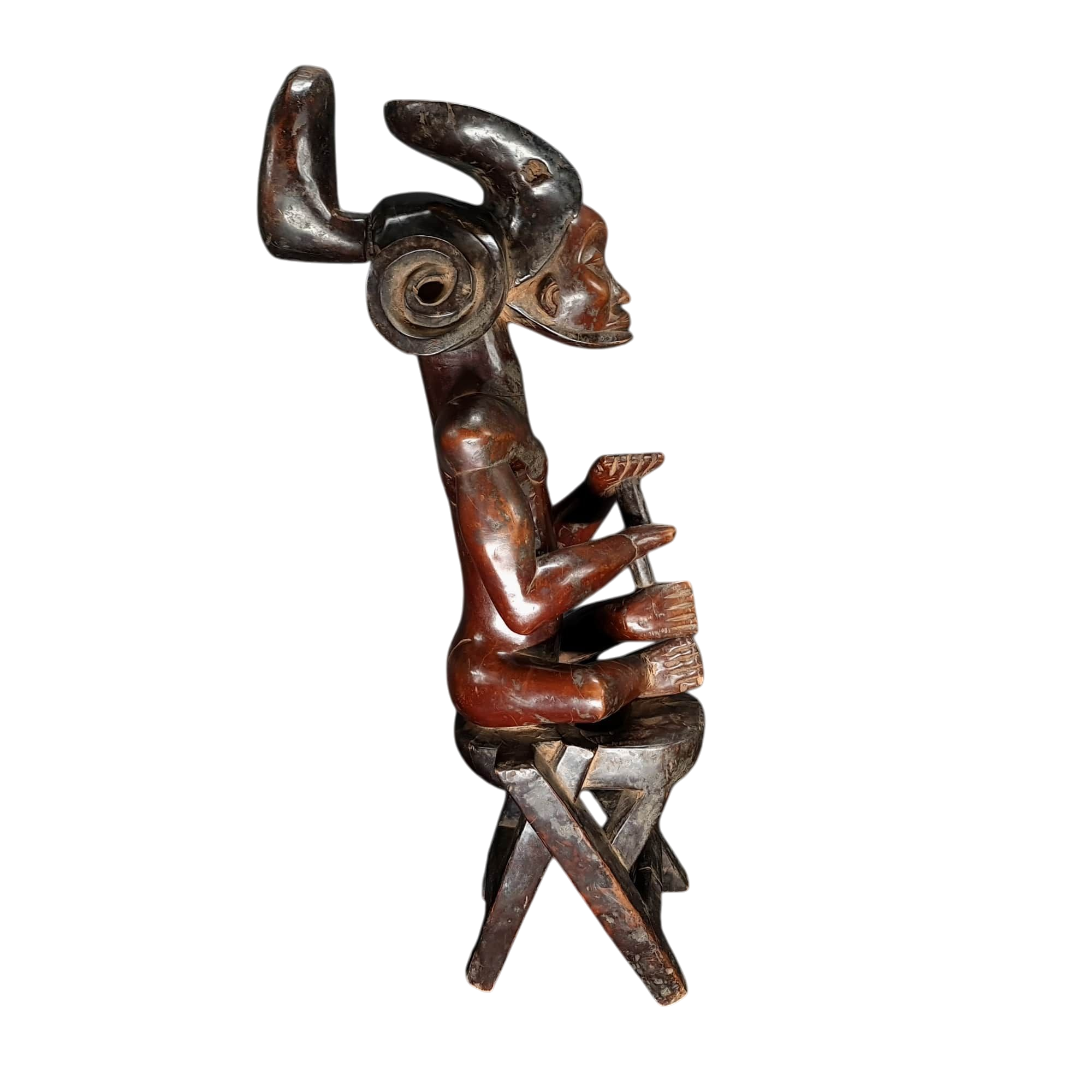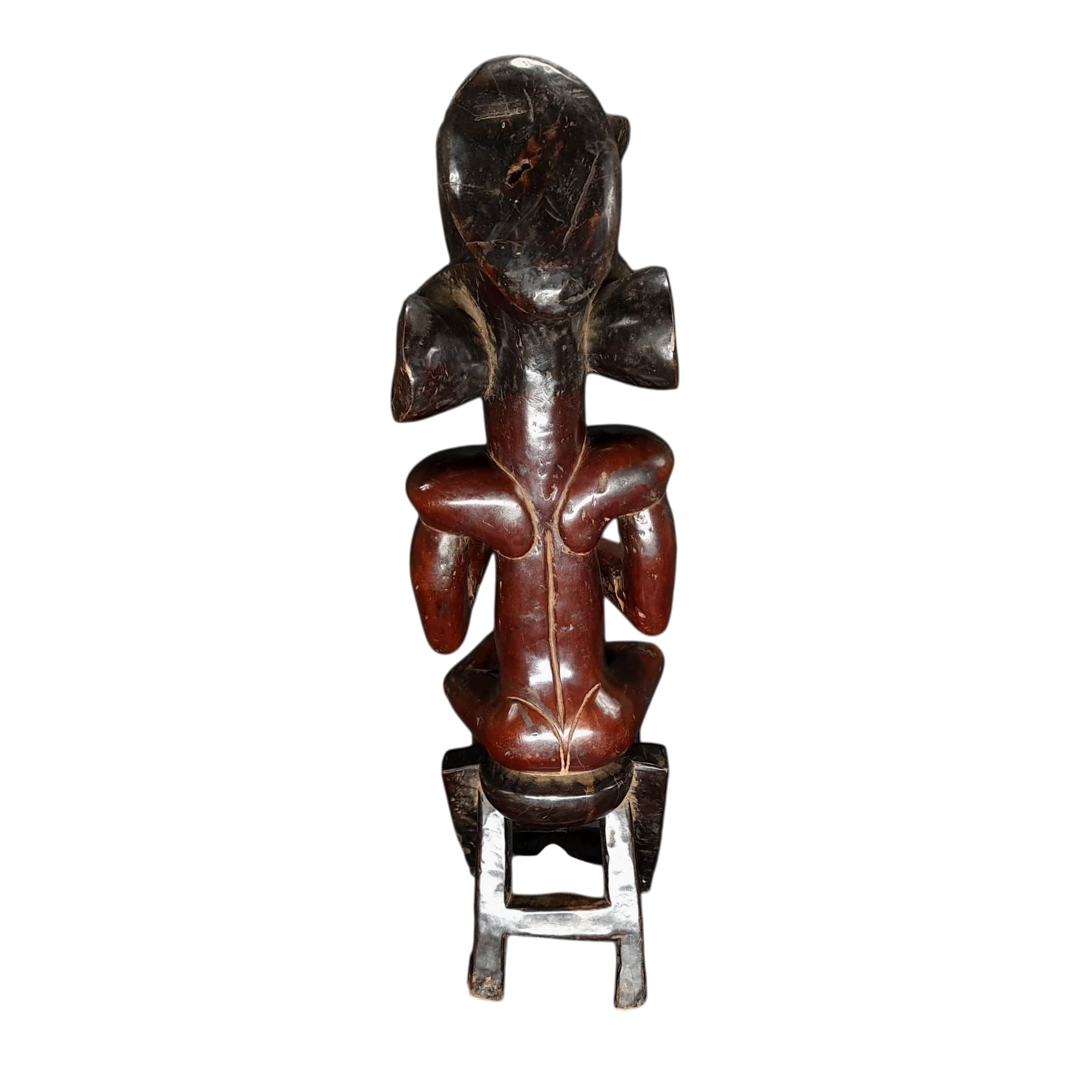Dimensions and Weight:
Weight: 3.482 kg
Height: 61 cm
Width: 15.5 cm
Depth: 32 cm
Characteristics and Description
Representation of Chiefs and Ancestors:
Chief Chokwe statues often represent figures of respected leaders or ancestors, embodying authority, wisdom, and the continuity of traditions. These figures are typically carved with majestic and dignified features, reflecting their high status.
Stylistic Features:
• Elaborate Hairstyle: The statues frequently showcase intricate hairstyles and ornaments, such as hats or crowns, signifying the chief’s rank and importance.
• Posture and Gestures: A seated posture is common, symbolizing stability and contemplation. The figures are often depicted seated or standing, with symbolic gestures, like holding a scepter or other insignia of power.
• Facial Features: The faces are finely carved with distinct features, expressive eyes, and sometimes ritual scarifications, representing marks of status or beauty, often with solemn expressions and elaborate hairstyles.
Materials and Techniques:
The statues are primarily carved from wood, but may also include other materials like metal or ivory inlays. The carving techniques are sophisticated, with great attention to detail and surface finish.
Symbolism and Usage
Symbols of Power and Authority:
Chief statues symbolize political and spiritual power, acting as a bridge between the living and the ancestors. They are often used in rituals to invoke protection and guidance from the spirits. They also embody the continuity of authority and the legitimacy of leadership within the Chokwe community.
Ritual and Cultural Use:
The statues are used during important ceremonies, such as chief enthronements, funerals, and ancestor commemoration rituals. They may also be placed in sacred spaces or shrines to watch over the community and protect against harmful influences.
Objects of Veneration and Memory:
As representations of respected ancestors, the statues help preserve collective memory and transmit the community’s values and stories. They serve an educational role, teaching younger generations the traditions and customs of their ancestors.
Aesthetics and Preservation
Patina:
Over time, the statues often acquire a natural patina from ritual handling and exposure to the elements.
Preservation:
To protect these artworks, it is essential to safeguard them from humidity, insects, and extreme temperature changes. Museums and collectors must use proper conservation techniques to maintain their integrity.
Cultural and Historical Importance
Cultural Identity:
Chief Chokwe statues are powerful symbols of cultural identity and pride, representing the richness and complexity of Chokwe traditions.
Artistic Heritage:
They are internationally recognized for their artistic quality and cultural value, and are often displayed in African art museums around the world.
The Chief Chokwe statues from the DRC are cultural treasures that offer deep insights into the traditions, beliefs, and history of the Chokwe people. They continue to play a vital role in the spiritual and social life of the Chokwe, while also being appreciated as major works of art.
Provenance
Private collection ZAMBELLI/BRUGNACCHI, assembled between 1990 and 2023.
Transferred to the Spirit Land of Africa Gallery in 2023.
600.00 €




